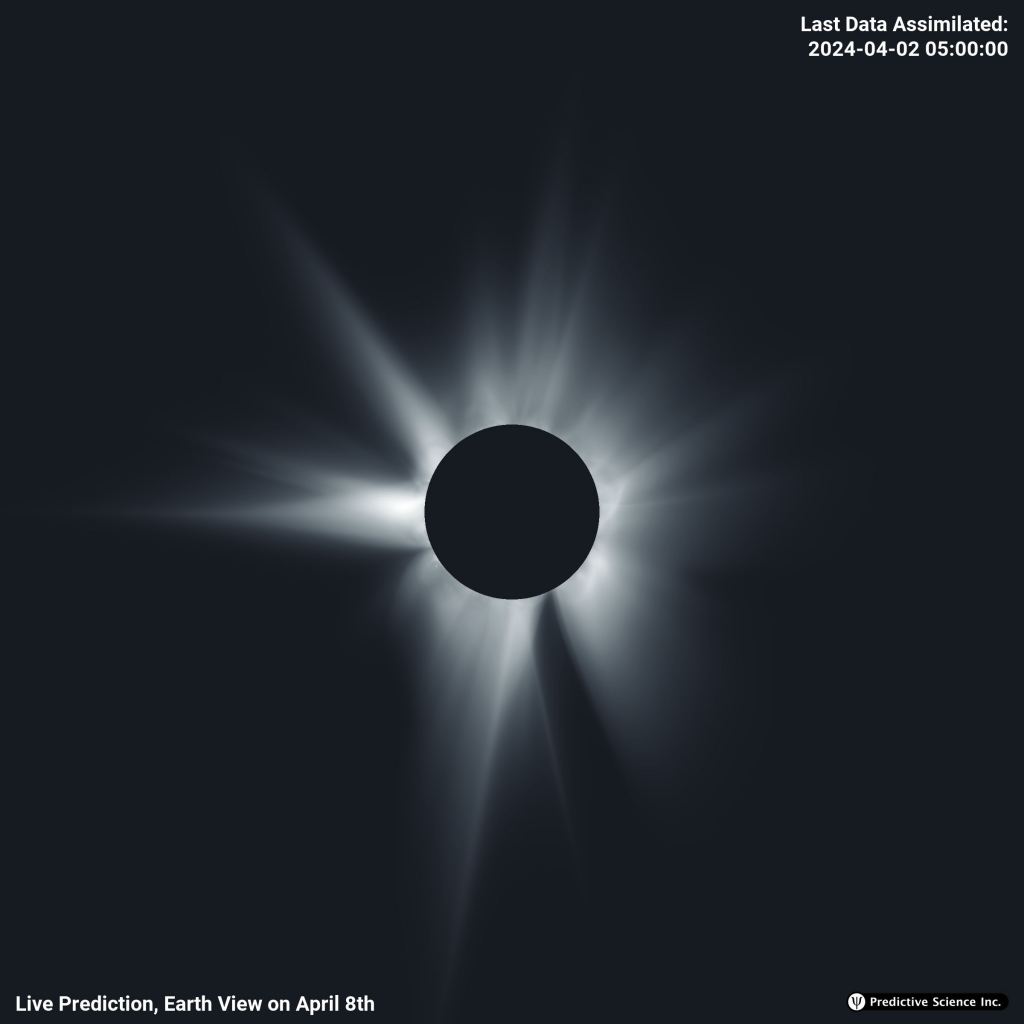Inside a Week to Totality: Weather Prospects, Solar Activity and More
Looking at prospects for eclipse day and totality.
Have you picked out your site to observe the eclipse on April 8th? Next Monday, the shadow of the Moon crosses Mexico, the contiguous United States from Texas to Maine, and the Canadian Maritimes for the last time for this generation. And while over 30 million people live in the path of totality, millions more live within an easy day drive of the path. I’m expecting that many folks will decide to make a three-day weekend of it, and eclipse travel traffic will really pick up this coming Saturday, April 6th.
We’ve written previously on observing and safety in our big guide to the April 8th total solar eclipse, and the science campaigns underway to meet the eclipse.
So, what can we expect on the big day? While eclipses and celestial mechanics are a definite, not all eclipses are the same, as key variables both cosmic and terrestrial play a role in the experience.
Watching the Weather
Of course, the major question mark that everyone is watching is weather and cloud cover. As the day nears, weather models begin to merge and agree. While climate models typically favor clear skies in early April for the southwest portion of the track and clouds to the northeast, predictions now actually show a reverse trend for the afternoon of the 8th. This means clear skies for New England, and clouds (and perhaps, even afternoon storm and tornado warnings) to the south towards Texas. Keep in mind, a Nor’easter is also inbound for New England late this week… we actually opted to head to northern Maine early for this very reason. Good sites to check include Pivotal Weather, and NOAA’s cloud cover forecast. On eclipse day, we’re watching the GOES-East live view page on North America to see what’s actually occurring.

It’s always tough to know if the Sun will be obscured by a cloud for the scant few minutes of totality days prior. Remember: you don’t need a pristine clear sky for a solar eclipse… just a good view of the Sun and Moon. April over North America can be a fickle month.
Sometimes, seeing the eclipsed Sun through thick fast-moving clouds can provide a memorable view. This was the case for us in 2017 when we caught the eclipse from PARI, North Carolina in the Smoky Mountains.
Solar Activity
We’re now headed towards the peak of Solar Cycle No. 25, so expect the Sun to be active, come eclipse day. Sunspots rotating into view now will also be visible during the partial phases of the eclipse leading up to totality. The Sun is uncharacteristically quiet this week, but we do have a few sunspots rotating into view to add a photogenic look to the Sun.

The Corona’s Appearance
Did you know: long-time eclipse chasers can actually identify which eclipse a given photo is from… just from the appearance of the corona. Predictive Science Incorporated actually runs a forecast for the appearance of the corona come eclipse day, and it looks like we’re in for a memorable one:

Catching the International Space Station transiting the partially eclipsed Sun can be a memorable observation. ISS Transit Finder is a good site to predict transits of the station for a given location.

Last Minute Plans
Mobility is key, come eclipse day. Plan your eclipse expedition like a heist, complete with a plan to go mobile and an escape route. Tales of totality are replete with stories of eclipse chasers driving down back roads and even taking off running on foot to stay ahead of incoming clouds.
Skywatching During Totality
Though totality is fleeting, do take about half a minute to stargaze. Jupiter and Venus will be visible, along with several +1st magnitude stars. Comet 12P Pons-Brooks is also at +4.5 magnitude in the constellation Aries, 25 degrees from the Sun. A well-placed outburst from this tempestuous comet could always vault it into binocular or even naked eye visibility.

Animal Activity During Totality
Finally, keep an eye (and ear) out for any anomalous phenomena during totality. Temperatures may drop, roosters may crow, and nocturnal creatures may briefly emerge, fooled by the false twilight. In 2017, we faced a sudden onslaught of mosquitoes as midday darkness descended.
If you have the means, do make sure you’re in the path of totality come eclipse day. This one has a special significance for us, as it’s the only total solar eclipse that passes over our hometown of Mapleton, Maine in our lifetimes.
Good luck, safe travels to totality, and clear skies!
The post Inside a Week to Totality: Weather Prospects, Solar Activity and More appeared first on Universe Today.
Universe Today
Go to Source